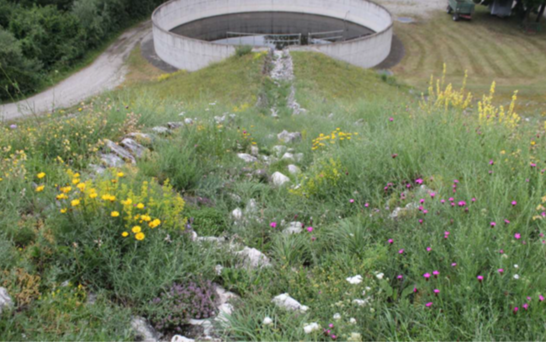Sustainable value creation: Alzchem promotes biodiversity
Together with climate change, preserving biodiversity is the second major challenge when it comes to the Earth's ecosystem. Biodiversity refers to the diversity of species as well as the diversity of habitats and genetic diversity within species.
Companies can also do a lot for biodiversity on their premises through targeted ecological land use. Alzchem has been working on this topic for many years and is trying to find a way to make an effective contribution to maintaining a high level of biodiversity. In addition to the areas used for industrial purposes, there are certain areas at Alzchem's production sites that are currently not in use. These are particularly suitable for creating islands where a high level of biodiversity can develop and which serve as "stepping stone biotopes" to connect a larger biotope network.
High biodiversity on an area the size of 30 soccer pitches
Based on this basic concept, the company defined the first areas back in 2020 and carried out a targeted survey of the existing vegetation. Based on the findings, proposals for near-natural maintenance were developed, implemented and further specialized over the years. To date, the program has been continuously expanded and currently comprises 7 areas with a total size of 21 ha, i.e. 210,000 m2 or the area of around 30 soccer pitches.
The existing biodiversity is very well developed on all the areas concerned and has a high potential as a habitat for many animal and insect species. Furthermore, the location of the green spaces in the landscape is very favorable and thus promotes biotope connectivity.
Diversity as the basis of life
Humans are dependent on many benefits that they derive from functioning ecosystems. These so-called "eco-services" include, for example, the pollination of plants by insects, the natural treatment of drinking water in the soil, the mitigation of climatic conditions, the purification of the air we breathe, the provision of food and the nutrient cycle.
Without the use of ecoservices, human life on earth would not be possible.
And this is where biodiversity comes into play: the higher the biodiversity, the less sensitive ecosystems are to disturbances and pressures. For example, if there are several species that perform the same functions in the environment, the probability increases that not all species will die out locally when environmental conditions change and that the ecosystem will remain functional. A food chain in which there is greater diversity at all levels is also much less sensitive to external influences and more stable.
You can find out more about sustainability at Alzchem on the website.


